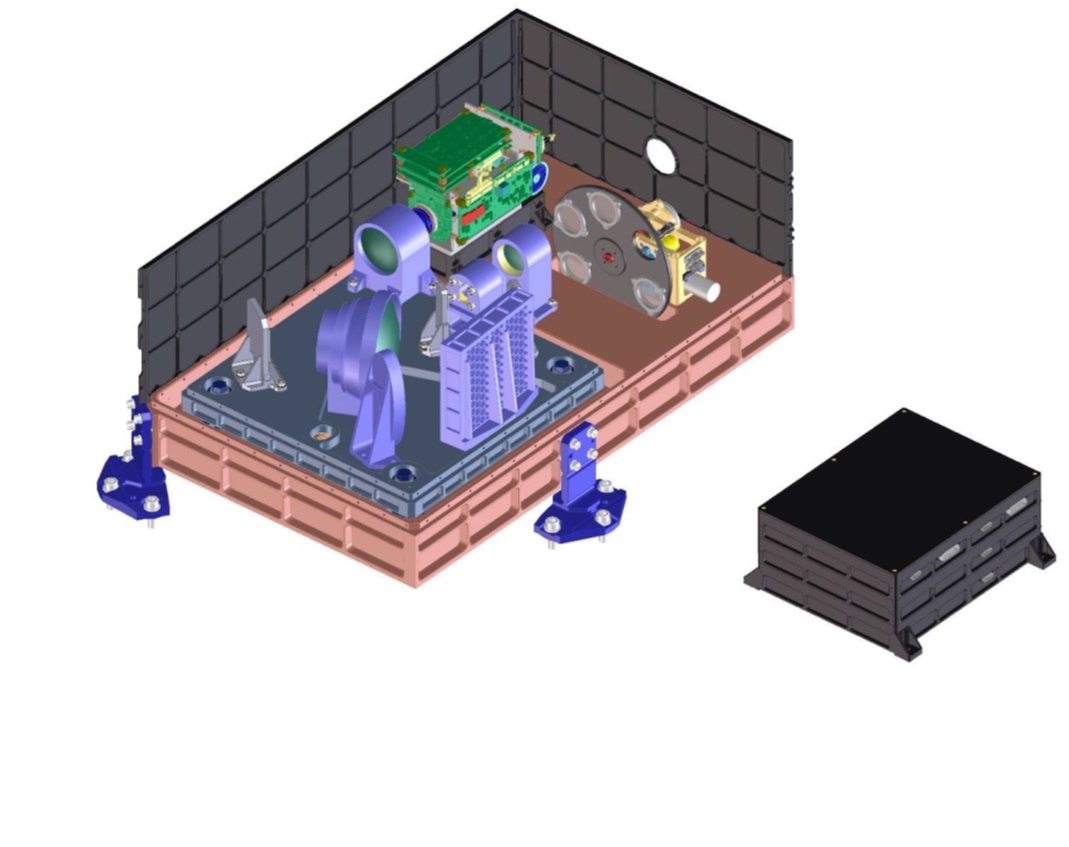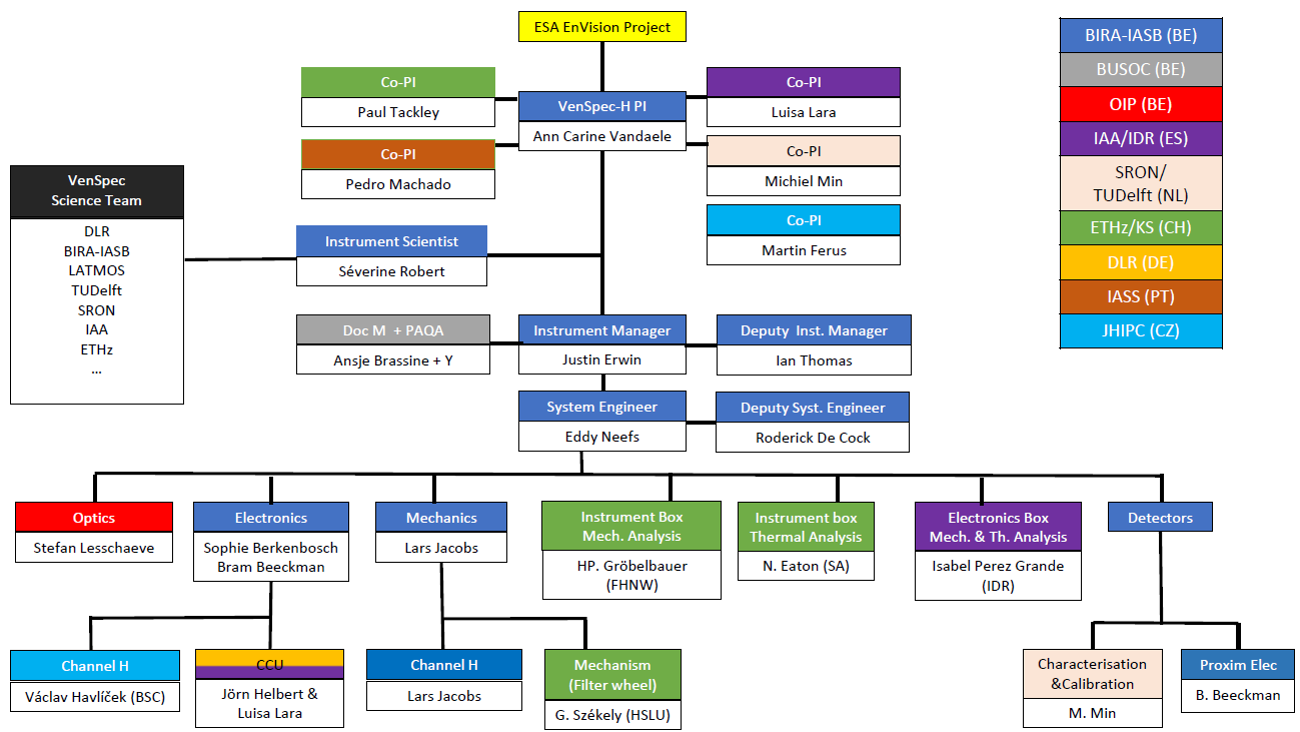VenSpec-H: Introduction to Instrument and Consortium
- 1Belgian Institute for Space Aeronomie, Bruxelles, Belgium (justin.erwin@aeronomie.be)
- 2Laboratoire Atmosphères, Observations Spatiales, Paris, France
- 3DLR, Berlin, Germany
Introduction
The VenSpec-H instrument is part of the EnVision M5 mission payload, which has been selected by ESA in June 2021 for launch in 2031. EnVision is a medium-class mission to determine the nature and current state of geological activity on Venus, and its relationship with the atmosphere, to understand how Venus and Earth could have evolved so differently. VenSpec-H will target different molecular species in nadir viewing geometry, as to better characterize the surface-atmosphere interaction. VenSpec-H is part of the VenSpec suite [1], including also an IR mapper and a UV spectrometer [2].
Instrument
VenSpec-H is a nadir pointing, high-resolution (R~8000) infrared spectrometer that will perform observations in different spectral windows between 1 and 2.5 microns. This instrument was originally developed with direct heritage from NOMAD-LNO [3, 4] that is currently onboard ExoMars Trace Gas Orbiter.
Due to the scientific requirements of the EnVision mission, a series of modifications have been introduced to address the spectral coverage and SNR of the instrument. A significant effort is now undergoing to develop and validate these “new” components for the operational environments and mission lifetime.

The VenSpec-H instrument is comprised of two boxes as shown above, the instrument box and the electronics box. The instrument box contains a warm base plate (0°C operating temperature) where the filter wheel and detector/cooler are mounted, and a cold base plate (-45°C operating temperature) where the majority of the optical elements are mounted. The majority of the electronics are in a separate box to improve the thermal stability of the instrument box.
Consortium
The VenSpec-H consortium is led by Belgium with the participation of Spain, Netherlands, Switzerland, Germany, Portugal, and Czech Republic. The organization is outlined below.

With such a large consortium, communication and organization are essential. To this effect we hold regular full team meetings, as well as smaller focus groups on topics such as filter wheel, thermal/mechanical, optical development, and polarization.
Acknowledgements
This work has been performed with the support of the Belgian Science Policy Office (BELSPO), with the financial and contractual coordination by the ESA Prodex Office.
References
[1] Helbert, J., et al., Proc. SPIE 11128, Infrared Remote Sensing and Instrumentation XXVII, 1112804 (2019)
[2] Marcq et al., “Instrumental requirements for the study of Venus’ cloud top using the UV imaging spectrometer VeSUV”, Advances in Space Research, 68 (2021) 275-291.
[3] Neefs, E., et al., Appl Opt 54(28), 8494-520 (2015)
[4] Vandaele, A.C., et al., Space Science Reviews 214(5) (2018)
How to cite: Erwin, J., Robert, S., Thomas, I., Neefs, E., De Cock, R., Marcq, E., Helbert, J., and Vandaele, A. C.: VenSpec-H: Introduction to Instrument and Consortium, Europlanet Science Congress 2022, Granada, Spain, 18–23 Sep 2022, EPSC2022-1113, https://doi.org/10.5194/epsc2022-1113, 2022.

